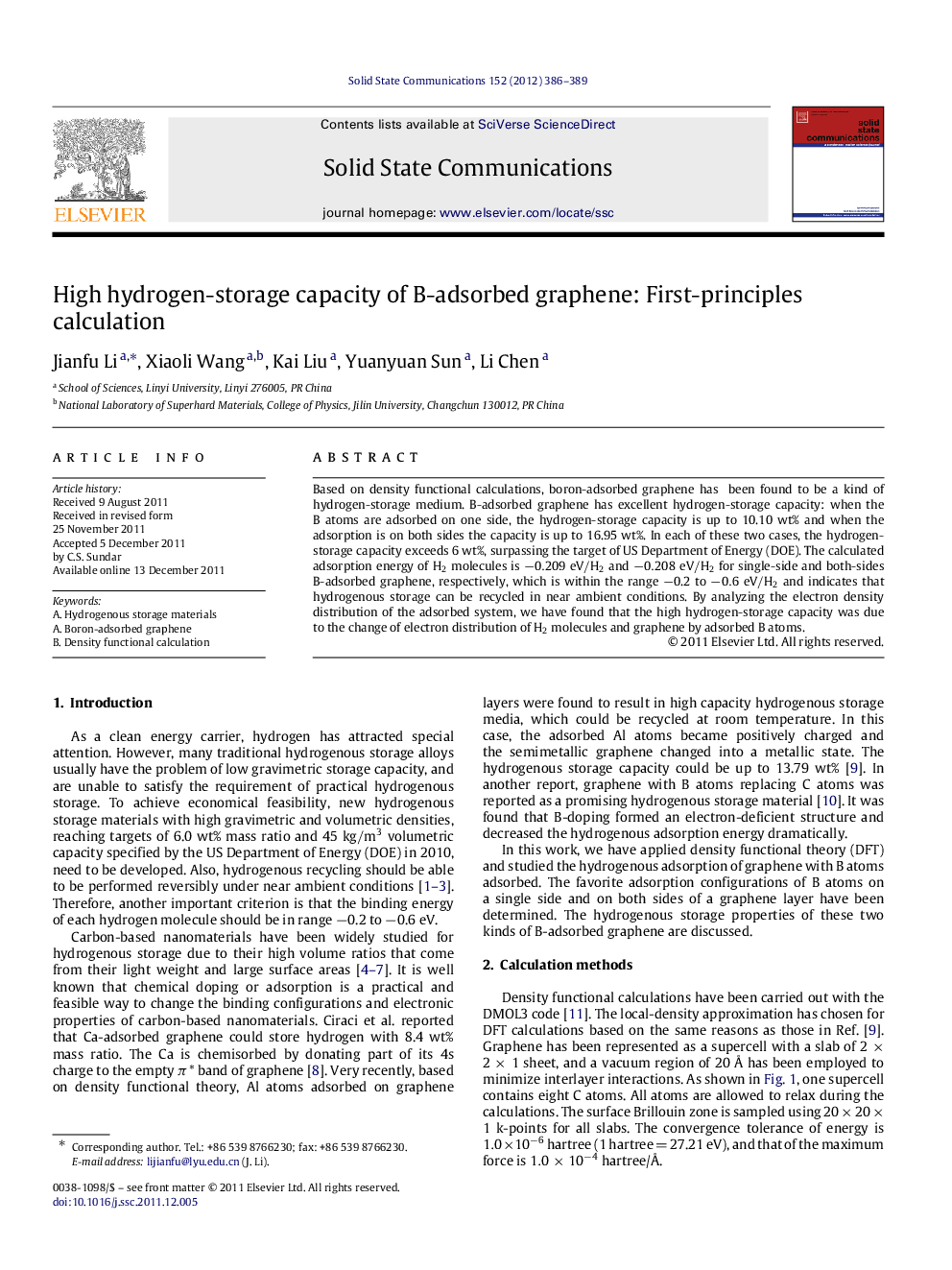| Article ID | Journal | Published Year | Pages | File Type |
|---|---|---|---|---|
| 1592846 | Solid State Communications | 2012 | 4 Pages |
Based on density functional calculations, boron-adsorbed graphene has been found to be a kind of hydrogen-storage medium. B-adsorbed graphene has excellent hydrogen-storage capacity: when the B atoms are adsorbed on one side, the hydrogen-storage capacity is up to 10.10 wt% and when the adsorption is on both sides the capacity is up to 16.95 wt%. In each of these two cases, the hydrogen-storage capacity exceeds 6 wt%, surpassing the target of US Department of Energy (DOE). The calculated adsorption energy of H2 molecules is −0.209 eV/H2 and −0.208 eV/H2 for single-side and both-sides B-adsorbed graphene, respectively, which is within the range −0.2 to −0.6 eV/H2 and indicates that hydrogenous storage can be recycled in near ambient conditions. By analyzing the electron density distribution of the adsorbed system, we have found that the high hydrogen-storage capacity was due to the change of electron distribution of H2 molecules and graphene by adsorbed B atoms.
► In this study, we investigate a high-capacity hydrogen medium, boron-adsorbed graphene. ► The results indicate that B-adsorbed graphene can store 16.95 wt% of H2 molecules. ► The high hydrogenous storage capacity is due to change of electron distribution.
